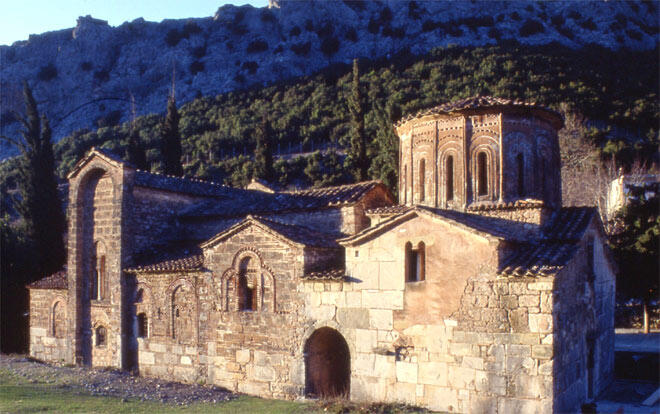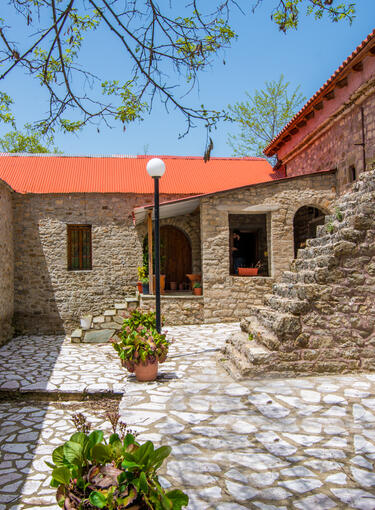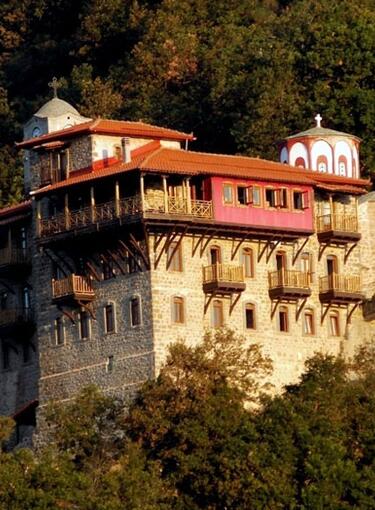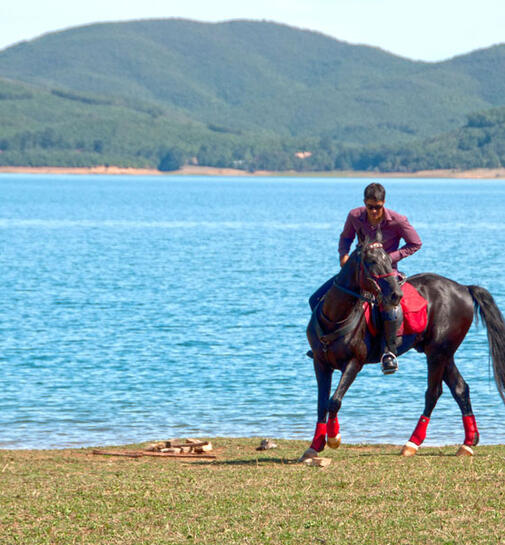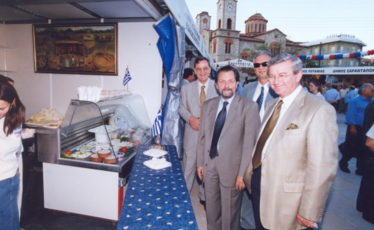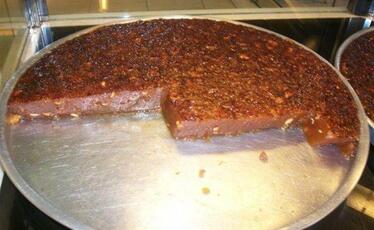At a beautiful, green location on the banks of the river Portaikos, near the present day town of Pyli, at a distance of approximately 20 km from Trikala, is the Byzantine church of Porta Panagia. It is built near the old settlement with the same name, which in the Middle Ages was called “Megalai Pylai” (Great Doors) due to its location, which was the passage from Epirus to Thessaly.
According to a note of 1788, the church was founded in 1283 by the sebastokrator John Angelos Komnenos Doukas, the bastard son of the despot of Epirus Michael II Komnenos Doukas. It was the catholicon of a monastery, which was probably built at the location of an ancient temple. It was a stauropegic monastery; it was dissolved in the period of the Turkish Occupation and was annexed to the nearby monastery of Agios Vissarionas (Dousiko). The church consists of two parts, the main church of the easy and the later exonarthex, of the 14th century, on the west. The main church belongs to the type of three-aisled, cross-vaulted basilicas with a transverse barrel vault, while the exonarthex is a cross-in-square church with a dome. The masonry of the church on the upper part follows the cloisonné system with a lot of ceramic jewelry. On its lower part they have incorporated large stones, used for a second time, and in some points they create a cross. At the exonarthex they have used mainly stone bricks, also used again, while at its dome, which is large in dimensions, the masonry is more carefully done.
At the interior of the church there was initially a sculpted decoration, which was destroyed by fire in 1854 or in 1855. Only parts of the marble, reconstructed, screen still survive. The wooden-carved screen that replaced the initial one was constructed in 1767, but twenty years later it was sold to the monastery Dousiko. Of particular importance are the two mosaic icons of the 13th century with the natural-sized figures of Christ and Virgin Mary holding baby Jesus (Odigetria) at the pillars of the screen. On the northwestern corner of the church the wall painting of the arcosolium survives, where the founder of the church was depicted on a smaller scale, who is led by an angel to the Virgin Mary. Fragments from the wall paintings of the 13th century are also at the area of the bema, while some of the wall paintings that are at the main church, as well as the ones at the exonarthex, date from the 18th century.
The church celebrates on the 23rd of August.
Informations
Additional
Date:
1283
Season:
Byzantine
Celebrates:
23 August
Holy Metropolis:
Trikke and Stagi
Under the Supervision of:
Ephorate of Antiquities of Trikala
Address:
Pyli 42032
Access:
Car
Parking:
Free
Schedule:
November-March: 08:00-12:00 & 15.00-17.00
April-October 2014: 8.00-12.00 &16.00-20.00


